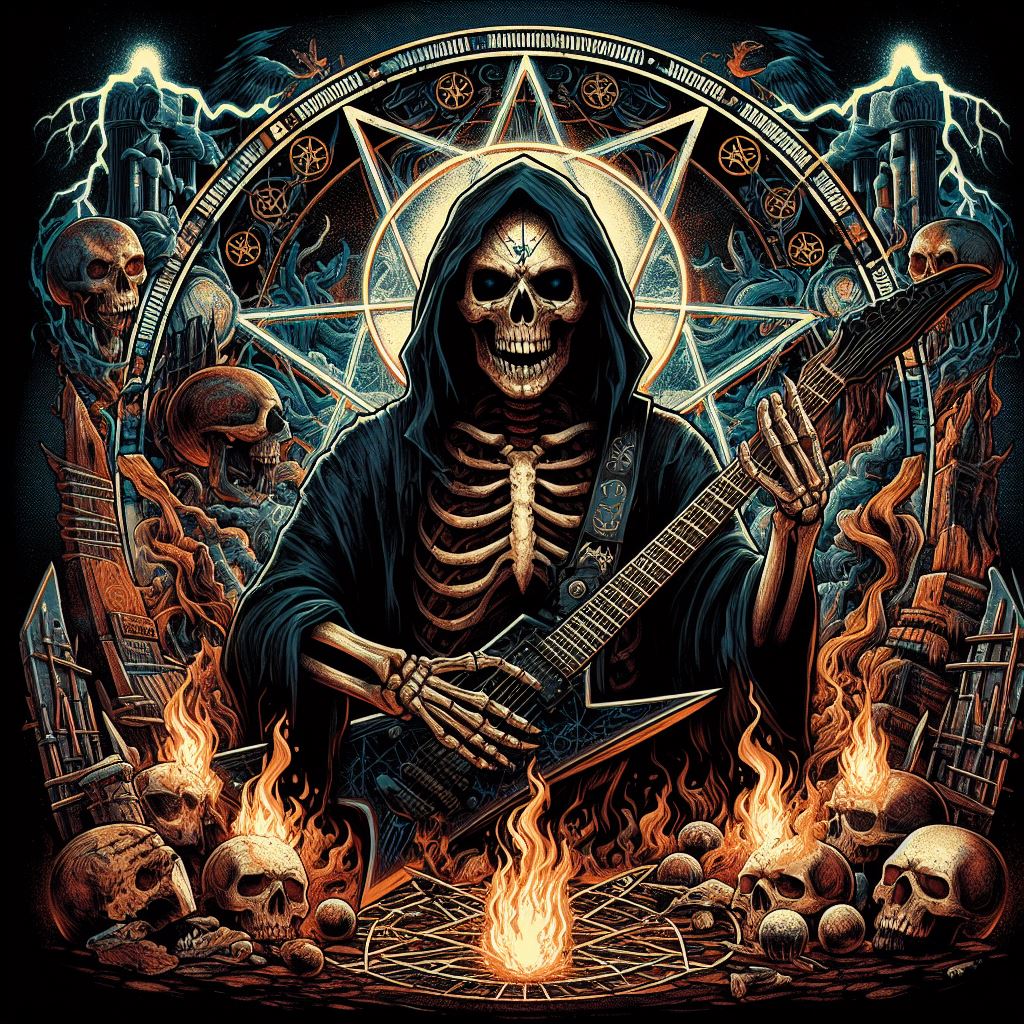Anthrax, hailing from New York City in the early 1980s, rose to prominence as one of the “Big Four” of thrash metal, alongside Slayer, Metallica, and Megadeth. Their sound, a potent blend of aggression, technicality, and a dash of humor, left an undeniable mark on the genre. Let’s delve into the thrashing history of Anthrax.
Early Years and Thrashing Fury (1981-1989):
Formed in 1981 by guitarist Scott Ian and bassist Danny Lilker, Anthrax initially experimented with hardcore punk before gravitating towards a heavier sound. With vocalist Dan Lilker (Danny’s brother) and drummer Kenny Onion joining the fold, they released their thrashing debut “Fistful of Metal” in 1984. Though commercially modest, it established their fast tempos, intricate guitar work, and socially conscious lyrics.
A pivotal moment arrived in 1985 with the arrival of vocalist Joey Belladonna. His soaring vocals and charismatic stage presence added a new dimension to the band. Albums like “Spreading the Disease” (1985) and “Among the Living” (1987) solidified their thrash credentials. Tracks like “A.I.R.” and “Indians” showcased their lightning-fast riffs and Belladonna’s impressive range.
Commercial Success and Controversy (1989-1992):
Anthrax achieved mainstream recognition with their 1988 album “State of Euphoria.” It boasted radio-friendly singles like “I Am the Law” (based on the Judge Dredd comic) and “Antisocial,” propelling them onto MTV and gaining them a wider audience. This success, however, wasn’t without controversy. Their cover art for “N.F.L.” (1990), featuring a mascot holding a police badge with a severed head, caused outrage and distribution issues.
Despite the controversy, Anthrax continued to push boundaries. “Persistence of Time” (1990) featured complex arrangements and socially conscious themes. However, tensions arose within the band, leading to Belladonna’s departure in 1992.
Transitions and Reunions (1992-2005):
The band soldiered on with John Bush (ex-Armored Saint) taking over vocals. Albums like “Sound of White Noise” (1993) showed a more groove-oriented sound, reflecting the shifting musical landscape. However, the lack of Belladonna’s signature voice left a void.
The late 90s saw Anthrax disband briefly before reuniting with Belladonna in 2001. Though they released a solid comeback album “We’ve Come for You All” (2003), creative differences led to another split.
The Belladonna Era Returns and Beyond (2010-Present):
In 2010, Anthrax reunited once again with the classic Belladonna-led lineup. They’ve since released a critically acclaimed album “Worship Music” (2011) and continued touring extensively, proving their enduring legacy.
Anthrax’s impact on thrash metal is undeniable. Their influence is evident in countless bands, and their music continues to inspire a dedicated fanbase. From their early thrashing fury to their radio-friendly hits, Anthrax has demonstrated an ability to adapt while staying true to their core sound. As they continue to thrash their way through the decades, one thing remains certain: Anthrax’s legacy is firmly secured in the annals of metal history.

Leave a Reply
You must be logged in to post a comment.